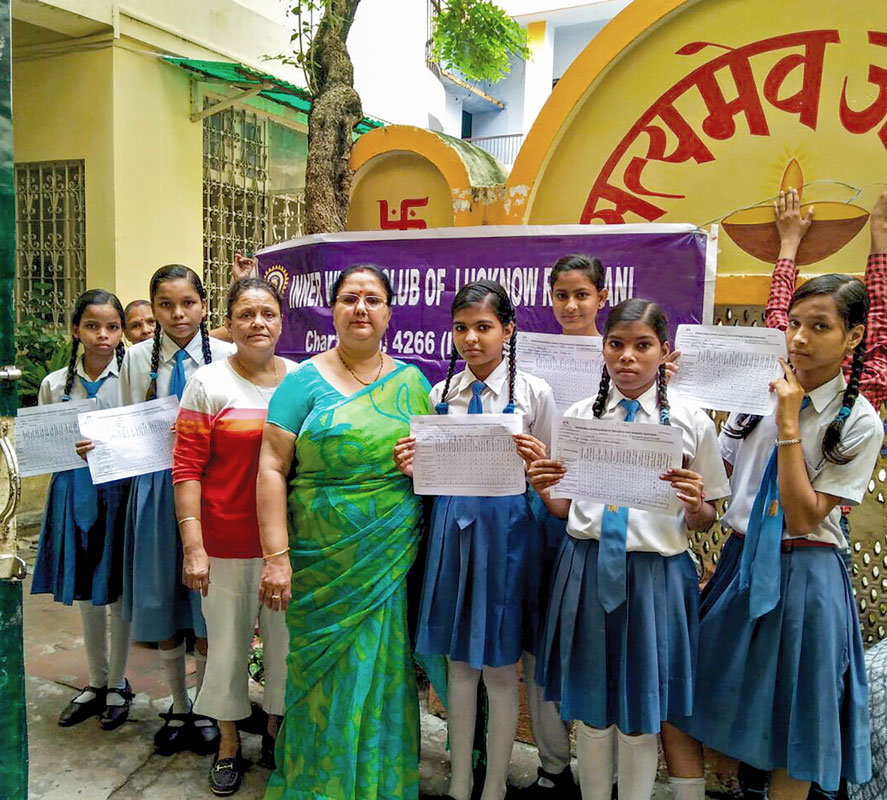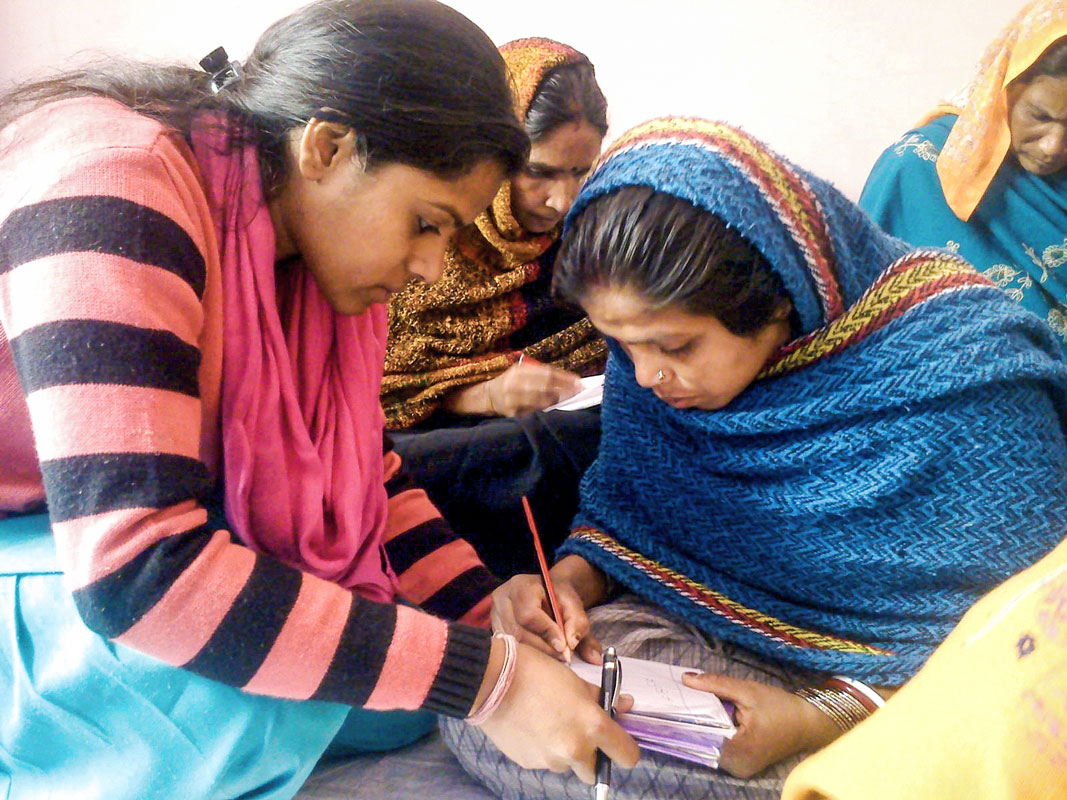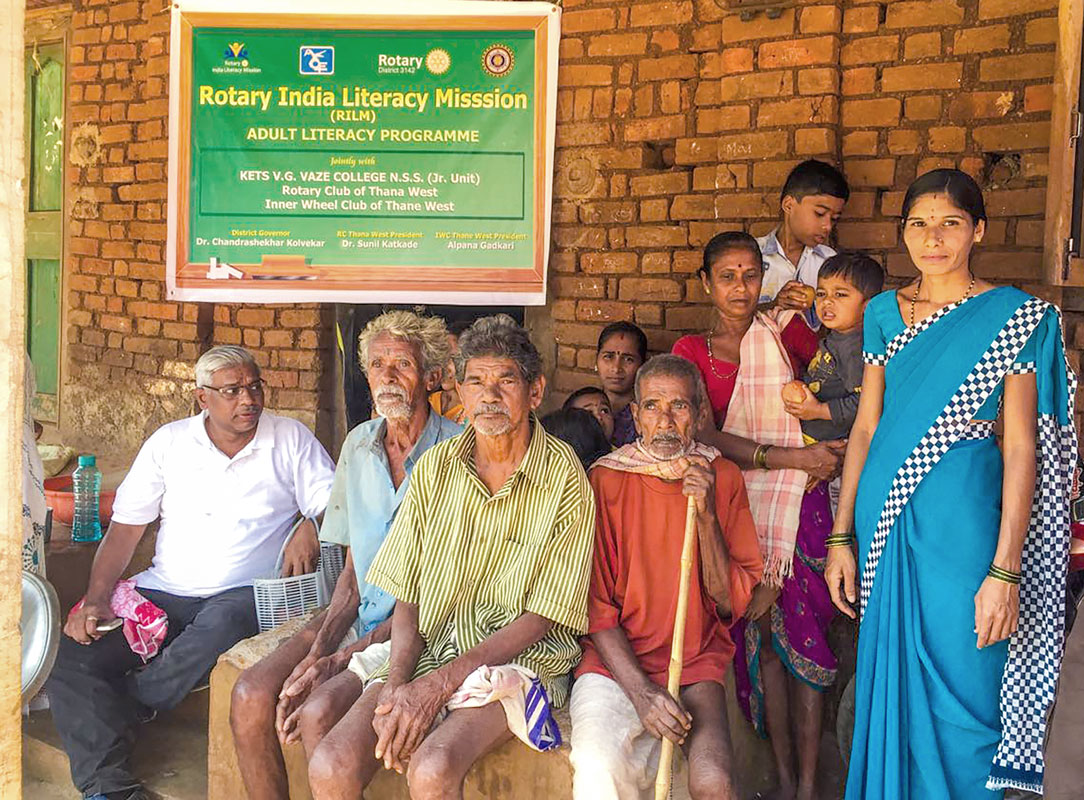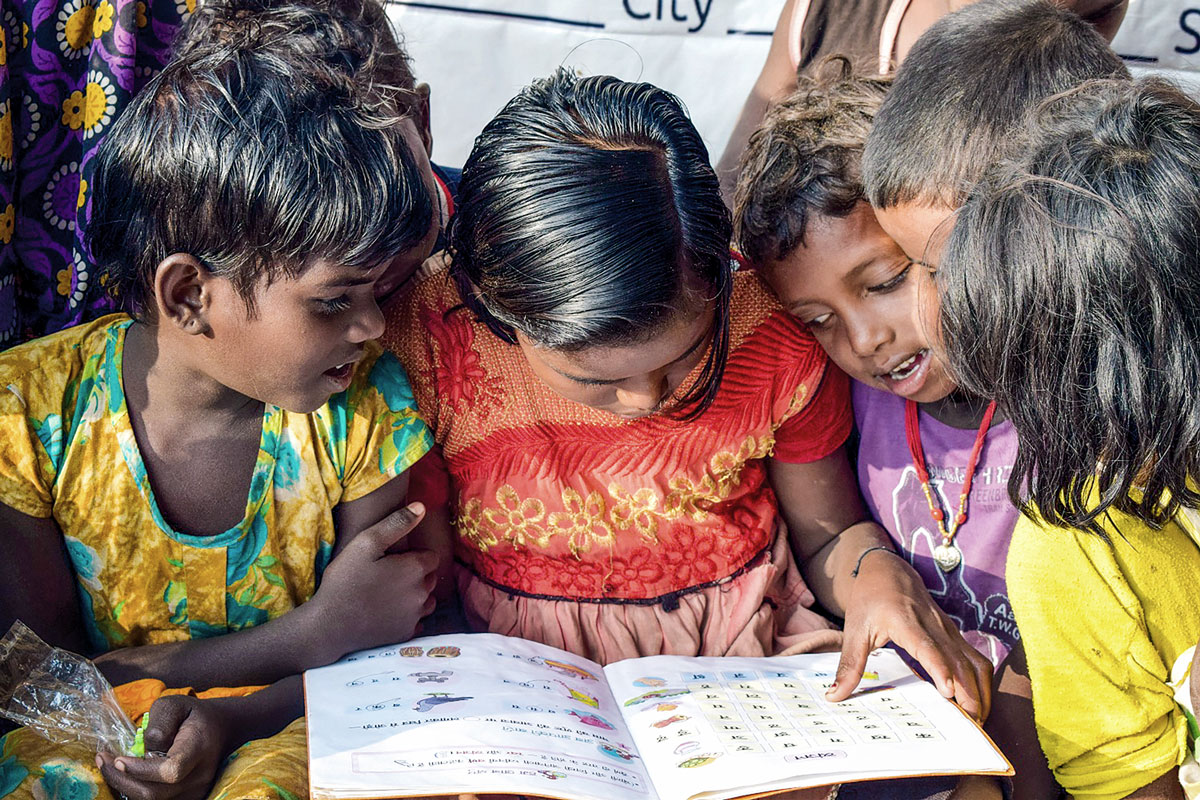
Long before he became Rotary International’s president, Shekhar Mehta was known for setting ambitious goals.
His reputation for successfully tackling difficult problems is why, in 2014, former RI president Kalyan Banerjee asked him to lead an effort to make India fully literate — a goal that has eluded the Indian government as well as many NGOs.
“I realised making a country literate is no easy task,” says Mehta, who defines full literacy as an overall rate of 95 per cent or above for those aged 7 and up. (The government of India estimates India’s current literacy rate among that group at 78 per cent.) “But I strongly believe in Gandhi’s view that if you find the goal, the means will follow.”
Rotarians understand that for any nation to achieve greatness, you need a high literacy level.
An accountant and real estate developer, Mehta didn’t enter the endeavour with any experience in education. “I had no clue, no background in education at all,” he says. He spent about nine months learning from experts before founding the Rotary India Literacy Mission (RILM), a nonprofit that aims to strengthen and standardise Rotary clubs’ literacy initiatives across India.
To accomplish this, RILM created a programme of service projects that it encourages clubs across India to take on with the nonprofit’s support and mentorship. The projects are built around the acronym TEACH, which stands for teacher support, e-learning, adult literacy, child development, and happy schools (which focuses on infrastructure improvements). “We think every school should be a school where our own children would be happy to study,” says Kamal Sanghvi, who was an RI director from 2019 to 2021 and chairs RILM now that Mehta is RI president.
Following the model that made India’s polio eradication campaign a success, coordinators promoted the TEACH programme in Rotary zones and districts in the country. RILM staff created manuals and organised trainings, and now nearly every club in India works on a project to support at least one aspect of the TEACH programme. “The momentum picked up so beautifully,” Sanghvi says. “Rotarians understand that for any nation to achieve greatness, you need a high literacy level.”
The combined efforts of hundreds of Rotary clubs, plus their partner organisations, have added up to large-scale results. To date, an estimated seven million children are benefiting from RILM’s teacher training component alone. The programme’s overall reach is enormous.
“Training, standardisation, and developing partnerships — these are the three things that make the programme work,” Mehta says.
Due to its impact, Rotary India Literacy Mission gained name recognition, which recently led to its largest initiative yet — working with the Indian government to create and distribute free e-learning content to children who were out of school because of the Covid-19 pandemic.
“In a lot of areas in India, internet penetration is very poor,” explains Biswajit Ghosh, RILM’s chief operating and strategy officer. “And the government was struggling to provide online education for the masses.” That’s when Ghosh says Rotary “put up its hand” and offered to facilitate the creation of high-quality multimedia content for grades 1–12.
RILM worked with a video production company to create the content, covering the cost through donations and sponsorships so that e-learning would be free to the nation.
In 2020, India’s government began broadcasting the Rotary-sponsored content on several TV channels — one per grade — in both English and Hindi. The lessons were available to about 100 million students across India, Ghosh estimates.
The goal now is to get the same multimedia curriculum translated into more of India’s languages and to provide the software to every public school in India. “The level of education in the villages is far lower than in the cities,” explains Sanghvi. “In the city, they simply have better access to technology and knowledge.”
But while a large-scale rollout of e-learning could help lessen this disparity, it will only work if teachers know how to use the software. That’s where the “T” in TEACH comes in. “We’re training teachers across India,” Sanghvi says, adding that the urgency to do so became apparent as soon as India went into its pandemic lockdown. “Many teachers didn’t know how to start a Zoom,” Sanghvi says.
The nonprofit works with partner organisations to provide the e-learning training and also offers an award to teachers who excel — as judged by their students and the school principal. It works like this: Rotary clubs survey local students, and that feedback is the basis on which a teacher is selected to win a Nation Builder Award. Teachers who score poorly are targeted for future club-sponsored training programmes. “We learn which teachers are outstanding and who needs to get their skills upgraded,” Sanghvi says. “It’s a win-win for us.”
Despite RILM’s success in improving literacy among children, India will not be able to achieve total literacy without addressing its estimated 287 million illiterate adults, who make up about one-third of the world’s illiterate-adult population.
Sanghvi says that illiterate adults have not been served well by government efforts to increase India’s literacy rate. So RILM facilitated the publication of a small workbook and primer that will help adults take the first step toward “functional literacy” — being able to read street signs and write their name, among other basic skills.
Local clubs distributed this primer to students, and asked that “each one, teach one” — in other words, a child with a family member who cannot read or write could use this primer as a tool to teach them the basics. “The schoolchildren were excited,” Sanghvi says. “They’d say, ‘Oh gosh, I’m going to become a teacher!’”
RILM’s goal is to make every Indian citizen at least functionally literate — able to engage in the everyday activities in their community that require basic literacy. The pandemic forced RILM to extend its deadline by two years. The group now hopes to achieve this goal by 2027.
It’s an ambitious goal, Mehta concedes, but “Rotary is thriving in India,” he says. “So, we need to dream.”
© Rotary
What is the E9?
The E9 is a group of nine countries — Bangladesh, Brazil, China, Egypt, India, Indonesia, Mexico, Nigeria, and Pakistan — that represent more than half of the world’s population and large education systems, and 70 per cent of the world’s illiterate adults. Their collective efforts considerably influence the success of global education initiatives.
Where are literacy programmes needed?
The following countries have adult literacy rates below 50 per cent:
Afghanistan
Benin
Burkina Faso
Central African
Republic
Chad
Côte d’Ivoire
Guinea
Guinea-Bissau
Liberia
Mali
Niger
Sierra Leone
Somalia
South Sudan









